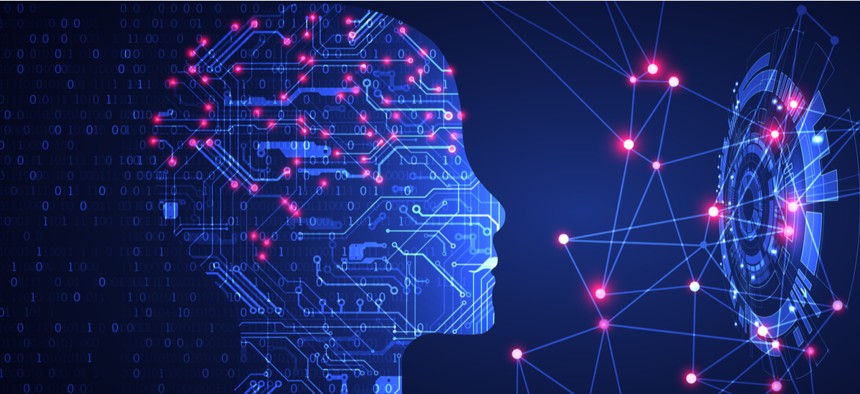Agencies Should Consider the Pros and Cons of Artificial Intelligence

Omelchenko/Shutterstock.com
Officials pushed agencies to examine the trade-offs—both positive and negative—as they adopt emerging technologies.
U.S. Chief Technology Officer Michael Kratsios and Energy Secretary Dan Brouillette shed a little light on how the Energy Department and Trump administration are thinking about ethics, regulatory approaches, and broader societal implications as they push the rollout of artificial intelligence and other emerging technologies.
During a fireside chat in Pittsburgh Tuesday, Brouillette reflected on similar-but-as-serious considerations previously made when the agency was developing nuclear technologies many years ago. He noted that now, when focusing on ethics, his mind tends to hone in on negative aspects and “bad results” that could arise with tech adoption.
“I haven't thought this through with great depth, but there seems to be some positive aspects of AI, too, on the ethics front that we need to explore,” Brouillette told the chat’s moderator Carnegie Mellon University Vice President of Research Michael McQuade. “And perhaps through that process we can speed the adoption of some of these technologies,” he said, adding that he’d like to give it all more thought.
Piggybacking off the point, Kratsios noted that while “there's often a tendency to immediately start looking at the lenses of the negative,” government officials should conduct a trade-off analysis in their tech-driven pursuits. President Trump signed an executive order on the American AI Initiative earlier in his term, he said, which called for a set of regulatory guidelines for agencies to lean on when implementing or overseeing the use of AI-powered technologies.
“So, think about the [Food and Drug Administration] approving an AI medical diagnostic, or think about [the Federal Aviation Administration] approving a drone—and what they should be considering in their regulatory approach,” Kratsios explained.
A draft of the first set of regulatory guidelines was released earlier this year, which at the time were deemed by administration officials to make up a “light-touch” regulatory approach.
“I think one of the core underpinnings of the way that the White House is directing agencies to think about this is to do that actual cost-benefit analysis,” Kratsios said. “The same cost-benefit analysis that is required by statute for any other regulation should also be done in the context of AI.”
Noting that it’s something that is “very hard to do,” the CTO articulated that the guidelines would help provide clarity on how “to see the benefits that these technologies can provide, weighed against some of the potential risks” to ultimately create better regulatory solutions to providing the technology to the American public.
Brouillette also pointed out that other agencies such as the Homeland Security and Health and Human Services departments are already applying AI technologies to help find redundancies and duplications, and address other issues within their own regulatory processes. Now, the Energy Department aims to follow suit.
“One of the questions that my predecessor asked me, Secretary Rick Perry, was ‘are we going to apply this to ourselves?’” he said. “And I think that's a very important common sense, fundamental first step—but it's important that we do it as a regulatory agency.”
The federal officials also touched on a range of other topics during the conversation, which was one part of several events Energy led in Pennsylvania this week.



